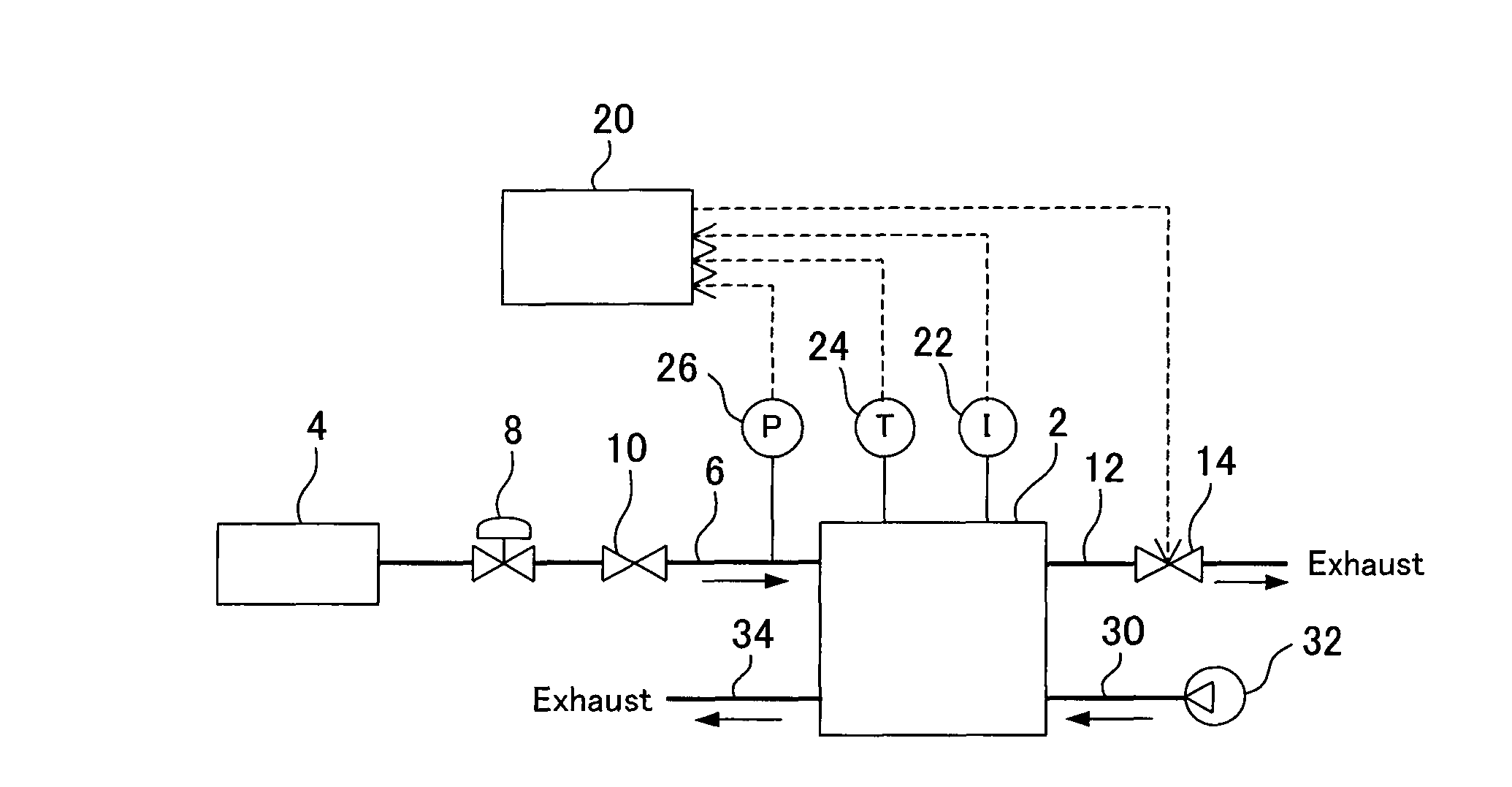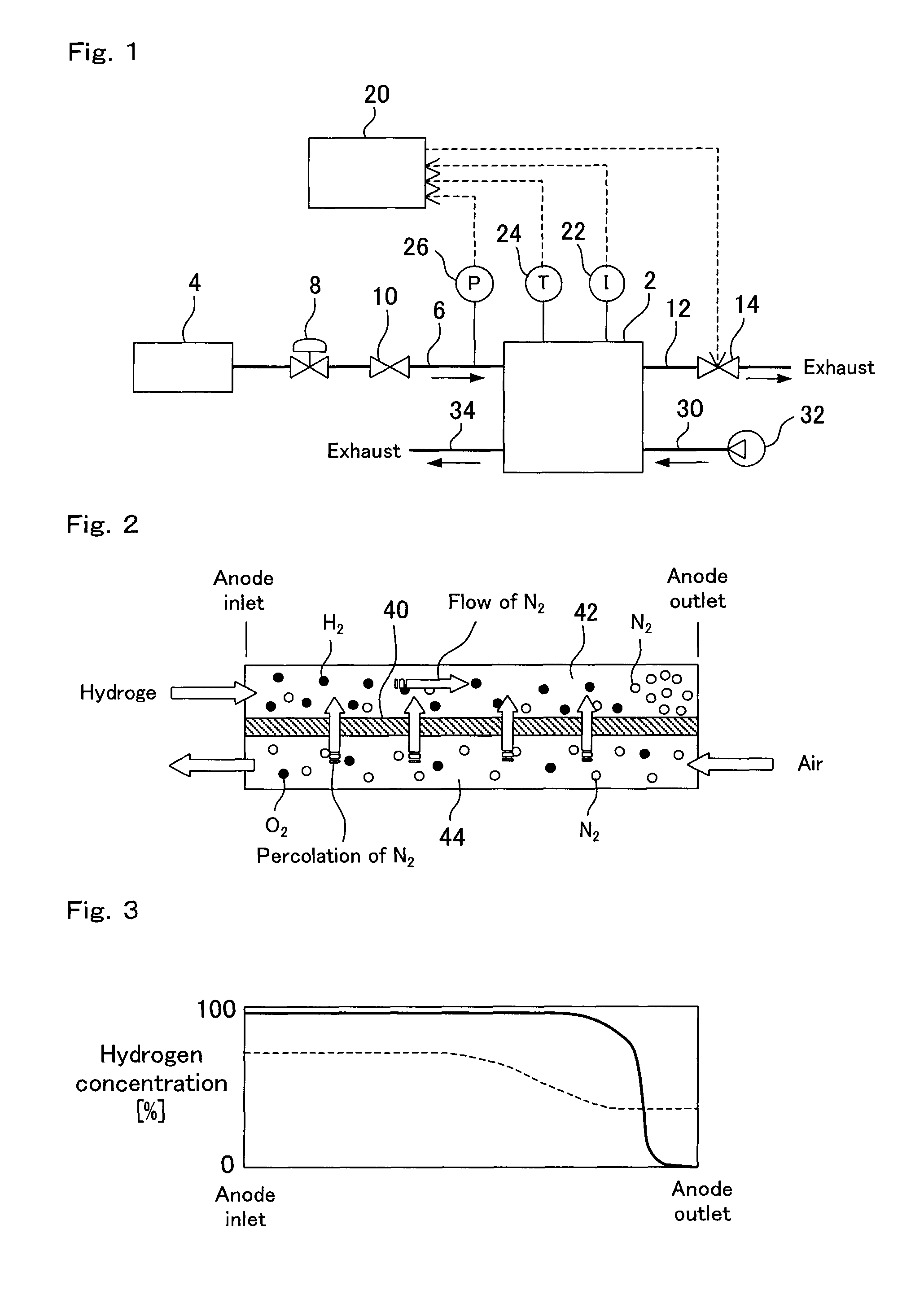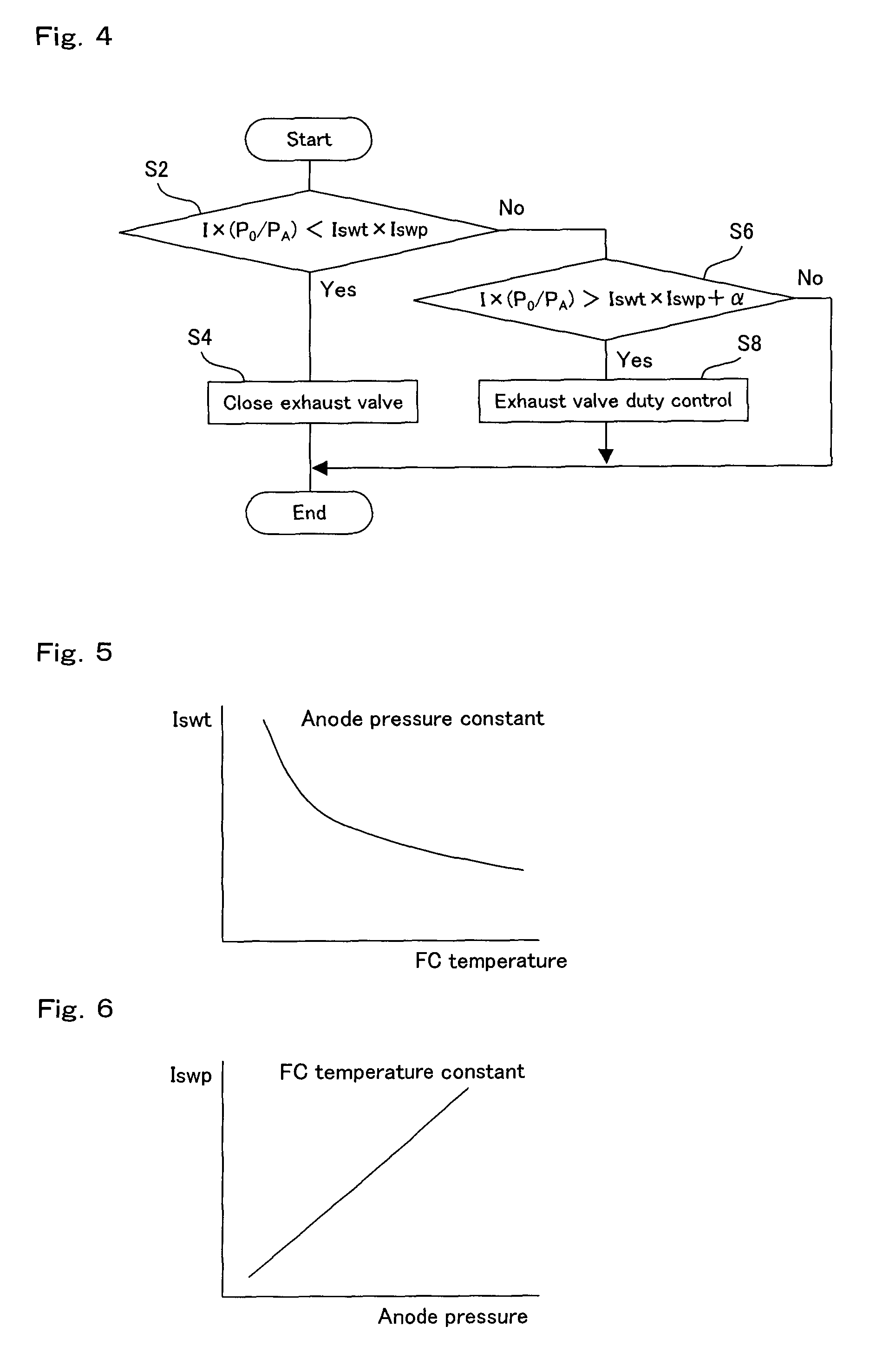Fuel cell system
a fuel cell and system technology, applied in the field of fuel cell systems, can solve the problems of poor fuel economy, deterioration of the output voltage and mea, and difficulty in meeting the two requirements at the same time, so as to prevent the discharge of wasteful fuel gas, reduce the amount of fuel gas, and reduce the effect of fuel gas
- Summary
- Abstract
- Description
- Claims
- Application Information
AI Technical Summary
Benefits of technology
Problems solved by technology
Method used
Image
Examples
Embodiment Construction
[0052]In the following, an embodiment of the present invention will be described with reference to FIGS. 1 to 6.
[0053]FIG. 1 is a schematic diagram showing a configuration of a fuel cell system according to the present invention. The fuel cell system supplies an electric power generated by a fuel cell 2 to a load, such as a motor. In general, the fuel cell 2 has the form of a fuel cell stack composed of a plurality of cells stacked one on another. Although not shown, each cell has a pair of current collectors and a membrane electrode assembly interposed therebetween. The membrane electrode assembly includes a solid polymer electrolyte membrane, catalyst portions formed on the both surfaces of the solid polymer electrolyte membrane, and gas diffusion layers, such as a carbon sheet, formed on the surfaces of the catalyst portions. Each current collector serves also as a separator between adjacent two membrane electrode assemblies. Each cell generates electric power using hydrogen as a...
PUM
| Property | Measurement | Unit |
|---|---|---|
| electric power | aaaaa | aaaaa |
| flow rate | aaaaa | aaaaa |
| temperature | aaaaa | aaaaa |
Abstract
Description
Claims
Application Information
 Login to View More
Login to View More - R&D
- Intellectual Property
- Life Sciences
- Materials
- Tech Scout
- Unparalleled Data Quality
- Higher Quality Content
- 60% Fewer Hallucinations
Browse by: Latest US Patents, China's latest patents, Technical Efficacy Thesaurus, Application Domain, Technology Topic, Popular Technical Reports.
© 2025 PatSnap. All rights reserved.Legal|Privacy policy|Modern Slavery Act Transparency Statement|Sitemap|About US| Contact US: help@patsnap.com



